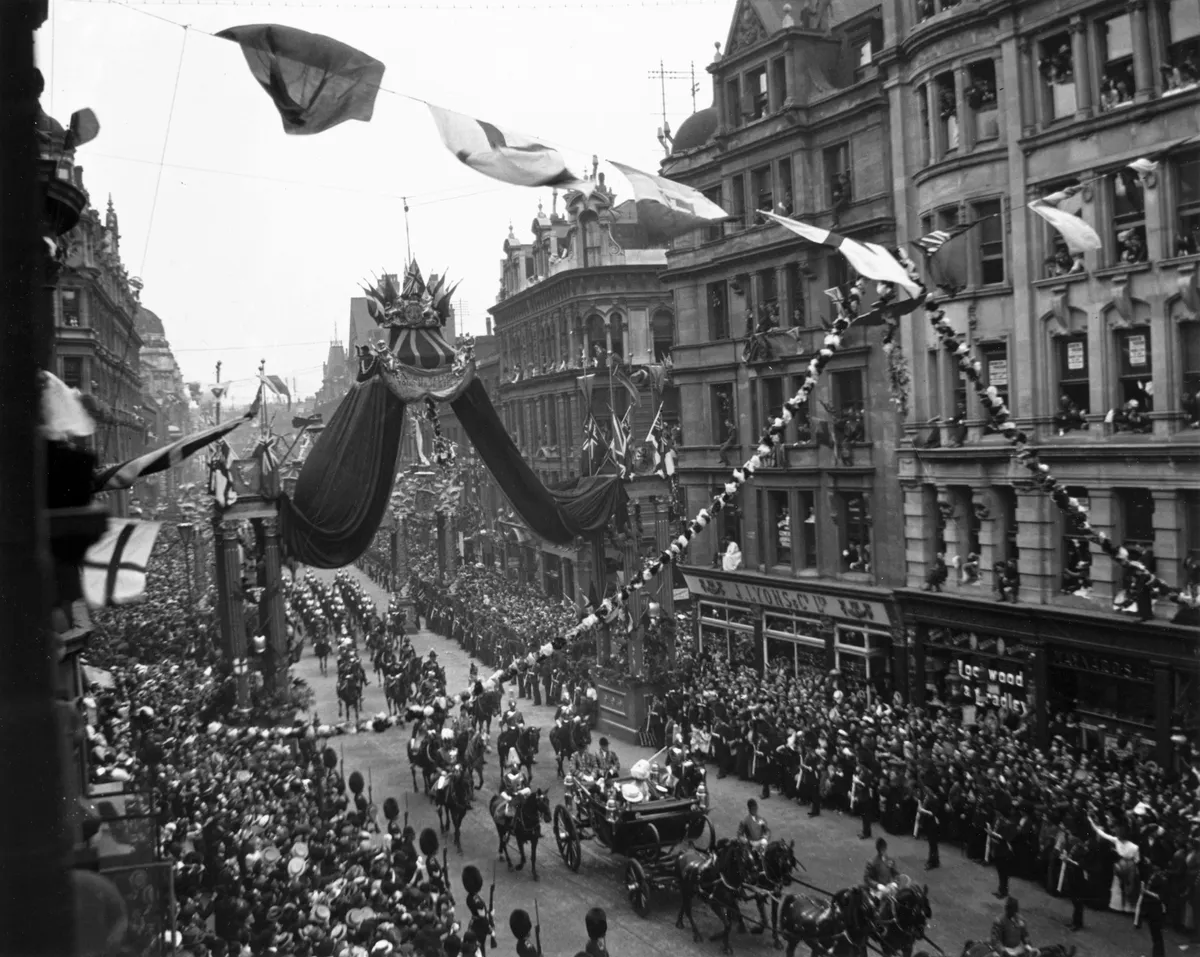The 2023 coronation of Charles III and Camilla was carried out as coronations have been for centuries, with traditional rituals in Westminster Abbey. But it was watched in a uniquely modern way, by millions of viewers in the UK around the world on TV and through live streaming online. Throughout history, royal coronations have been an opportunity for the country to come together and celebrate.
When young George III and his teenage bride, Charlotte of Mecklenburg-Strelitz, were crowned in 1761, enterprising homeowners who lived along the parade route of the procession rented out their windows and perches on scaffolding, while soldiers took bribes to let spectators onto the front row and even rented out their uniforms. So many well-wishers crammed into the specially erected grandstands on the night before the ceremony that they were banned from lighting fires to keep warm, in case they sparked an inferno. For those who couldn't attend, across the country pamphlets and newspapers breathlessly reported on coronation plans, and provided rich portraits of the day itself.
When Queen Victoria was crowned in 1838, she offered a fresh new hope to a country that had grown tired of the excesses of her Georgian predecessors, and our ancestors celebrated with a fervour that left some commentators reeling. Described by the Examiner as a “national ovation”, the vast range of festivities easily drowned out Coronation Day protests in the north of England. The majority of people were thrilled, with the first of more than 400,000 well-wishers pouring into London a week before the ceremony. They were hungry for a fair in Hyde Park that would offer free entertainment over four days, not to mention an impressive firework display in Green Park.
Around the country, money was raised so that the neediest members of society could take part in the celebrations too. Food was central to many special events – children in Bristol and elsewhere were treated to a dinner of roast beef and plum pudding, and in Newcastle the Northern Liberator encouraged donations to a subscription feast for “the out-door poor”. Parades, often involving schools and local dignitaries, were also common throughout the nation on Coronation Day before the introduction of broadcast media, and in 1838 members of Friendly Societies in Stockton-on-Tees formed a procession to properly honour the young queen.
Church services were held as well to honour the newly crowned monarch, and civic entertainments laid on in a masterpiece of mass celebration. There were fancy-dress balls, and children were given coronation cups in Liverpool. A public banquet and firework display were arranged in Edinburgh, along with a grand bonfire on Arthur’s Seat as the skies over the UK lit up in celebration.
The 1902 coronation of Victoria’s eldest son Edward VII saw similar scenes, with oxen roasting in Oxford and Londoners celebrating in public parks, while in Marple, Cheshire, pupils from Sunday Schools paraded through town before tea, games and dancing. The day closed, as it did all over England, with a firework display. As the 20th century progressed, those ox roasts and subscription dinners found their modern expression in street parties, when neighbours came together in the middle of their road to celebrate.

The 1937 coronation of George VI was intended as a very public demonstration that the monarchy shone as brightly – and was on as firm a footing – as ever following a dramatic constitutional crisis. His older brother Edward VIII had chosen to abdicate, because he wanted to marry the divorced socialite Wallis Simpson – something that was impossible while he was king, since he was the nominal head of the Church of England at a time when divorced people could not marry in church if their former spouse was still alive. Although the ceremony was not televised, TV coverage of the procession to Westminster Abbey served as the UK’s first major outside broadcast. In addition, it was the first coronation to be broadcast on the radio. So for the first time people outside London were able to see and hear the rarefied spectacle.
In 1953, Elizabeth II’s coronation was once again greeted with street parties and celebrations, but there was one unique cultural milestone too. Many households bought their very first TV set so that they could watch the first ever televised coronation ceremony, an initiative that some in Parliament and the royal household had bitterly opposed. The event was broadcast across the world, and films were flown across the Atlantic so that viewers in the USA and Canada could experience the pageantry on the day itself.
Millions of spectators crowded the parade route while across the nation families and friends gathered around the TV. An estimated 10.4 million viewers watched on domestic sets and 1.5 million people gathered in cinemas and pubs, while in London five-year-old Caroline Veal put on her best clothes to take a trip to work, where “my Dad had taken a TV to the office and put it on top of his filing cabinet – something virtually unheard of in the 1950s”.








